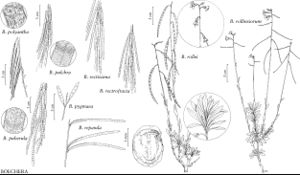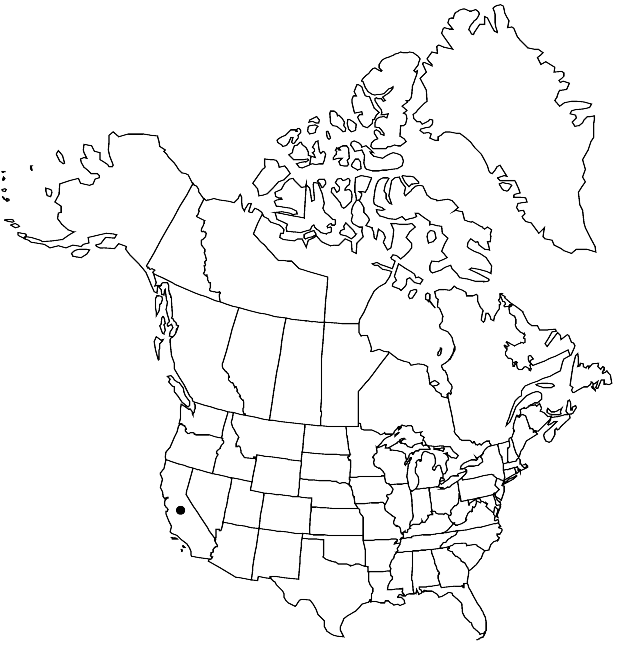Boechera pygmaea
Novon 13: 388. 2003.
Perennials; usually long-lived; sexual; caudex woody, (often with persistent, crowded leaf bases). Stems usually 2–5 per caudex branch, arising from margin of rosette near ground surface, or arising laterally proximal to sterile shoots, 0.2–0.8 dm, pubescent proximally, trichomes simple and short-stalked, 2- or 3-rayed, to 0.4 mm, glabrescent distally. Basal leaves: blade linear, 0.8–1.5 mm wide, margins entire, ciliate, trichomes (simple and spurred), to 0.8 mm, surfaces moderately pubescent, trichomes short-stalked, 2–4-rayed, 0.05–0.4 mm. Cauline leaves: 2–4, not concealing stem; blade auricles absent, surfaces of distalmost leaves pubescent. Racemes 2–5-flowered, unbranched. Fruiting pedicels erect to ascending, straight, 2–7 mm, usually pubescent, rarely glabrous, trichomes subappressed, branched. Flowers erect at anthesis; sepals pubescent; petals white, 3.5–5 × 0.7–1 mm, glabrous; pollen ellipsoid. Fruits erect to ascending, often appressed to rachis, not secund, straight, edges parallel, (1.3–)2–3.3 cm × 4–5 mm; valves glabrous; ovules 8–12 per ovary; style 0.05–0.4 mm. Seeds uniseriate, 3–5 × 2.5–4.5 mm; wing continuous, 0.8–2 mm wide distally.
Phenology: Flowering May–Jul.
Habitat: Barren flats of arkosic gravel
Elevation: 2400-3200 m
Discussion
Of conservation concern.
Despite the distinctive morphology of Boechera pygmaea, there is evidence that it is capable of producing fertile hybrids with B. stricta. It is known only from Inyo and Tulare counties in the southern Sierra Nevada.
Selected References
None.

